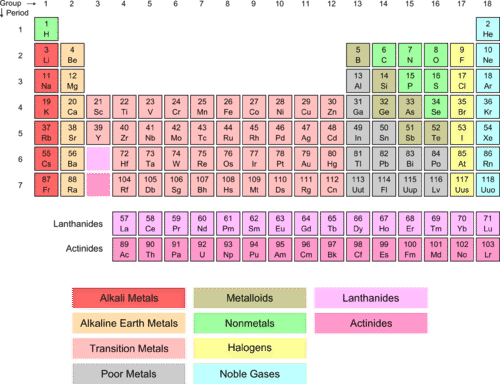What are the similarities and differences between these two cars?
From the outside, the two cars above look the same (except for the flashy paint job on the racing model). They are the same model of the car, but one is a stock edition for regular driving while the other one is built for high-speed racing. We really can’t tell much from the external view. To see the differences, we need to go under the hood, take the engines apart, and look at the braking and suspension systems in order to see how the two cars differ.
Many electron configurations of elements are simple and straightforward. We can look at the outer shell and easily understand how that set of elements will react in terms of electron gain or loss. However, there are sets of elements that are more complex in their behavior. One such group is called the transition elements.
Transition elements are the elements that are found in Groups 3-12 (old groups IIA-IIB) on the periodic table (salmon-colored block in the middle of the table). The term refers to the fact that the d sublevel, which is in the process of being filled, is in a lower principal energy level than the
Piece of silver. [Figure3]
Compounds of many transition elements are distinctive for being widely and vividly colored. As visible light passes through a transition metal compound dissolved in water, the d-orbitals absorb light of various energies. The visible light of a given energy level which is not absorbed produces a distinctly colored solution.
Transition metal compounds dissolved in water exhibit a wide variety of bright colors. From left to right are shown solutions of cobalt(II) nitrate, potassium dichromate, potassium chromate, nickel(II) chloride, copper(II) sulfate, and potassium permanganate.[Figure4]
Summary
- The transition elements are found in groups IIIA-IIB (new groups 3-12).
- These elements are characterized by having unfilled d sublevels.
- In general, the next higher s sublevel is already filled or has one electron missing.
- Many transition element compounds are brightly colored due to the inner-level d electron transitions.



